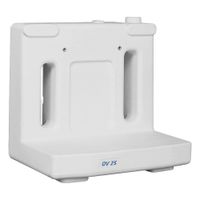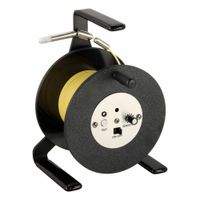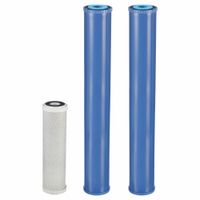Call +(254) 703 030 000 / 751 483 999 / 721 704 777
- Home
- Lab Supplies
- Water Purification Wastewater Sampling
.....Read More
Frequently Asked Questions
What is the best method for water purification in laboratories?
The best method for water purification in laboratories often depends on the specific application and the required water quality. However, a multi-stage purification system is generally considered the most effective for achieving high-purity water.
Typically, such a system starts with pre-treatment steps like activated carbon filtration and sediment filtration to remove larger particles, chlorine, and organic compounds. This is followed by reverse osmosis (RO), which removes a significant percentage of dissolved salts, bacteria, and viruses. While RO water is good for many applications, further purification is usually needed for critical laboratory tasks.
For ultra-pure water, deionization (DI) using ion-exchange resins is employed to remove remaining ions. Ultraviolet (UV) sterilization is also commonly integrated to eliminate microorganisms. Finally, a 0.2-micron filter is often used as a final step to remove any remaining particles or bacteria. This comprehensive approach ensures the water is free from impurities that could interfere with sensitive experiments, analytical procedures, or cell culture.
How often should water purification system filters be replaced?
The frequency for replacing water purification system filters varies significantly based on the type of filter, the quality of the incoming water, and the volume of water processed.
Generally, sediment filters, which remove larger particles like dirt and rust, should be replaced every 3 to 6 months. Carbon filters, used for reducing chlorine, taste, and odor, typically last 6 to 12 months. More advanced filters, such as those in reverse osmosis (RO) systems, have different replacement schedules. The RO membrane itself might last 2 to 5 years, while pre-filters and post-filters in an RO system usually need replacement every 6 to 12 months. UV lamps in UV purification systems typically need to be replaced annually.
It is crucial to consult the manufacturer's recommendations for your specific water purification system and filter models. Regular replacement ensures optimal system performance, prevents filter clogging, and maintains the quality of your purified water. Ignoring replacement schedules can lead to decreased efficiency, reduced water flow, and potentially allow contaminants to pass through, compromising your water's safety.
What are the benefits of using UV lamps in water purification systems?
UV lamps in water purification systems offer several significant benefits. They are highly effective at inactivating a wide range of microorganisms, including bacteria, viruses, and protozoa, by disrupting their DNA and rendering them unable to reproduce. This physical disinfection method does not use chemicals, avoiding the addition of harmful byproducts or changes to the water's taste, odor, or pH. UV systems are also quick and efficient, providing instant disinfection as water passes through the lamp chamber, and they are relatively low maintenance. Their compact size makes them suitable for various applications, from point-of-use systems in homes to large-scale industrial water treatment facilities.
How do water purification systems ensure accurate test results?
Water purification systems ensure accurate test results by removing impurities that could interfere with analytical measurements. These systems typically employ a combination of technologies, including filtration (e.g., activated carbon, reverse osmosis), deionization, and UV sterilization. Filtration removes particulate matter and organic contaminants, while deionization removes dissolved inorganic ions that can affect conductivity and interfere with sensitive tests. UV sterilization eliminates microorganisms that could introduce biological contamination. By producing water with extremely low levels of contaminants, these systems minimize background interference and ensure that test results reflect only the analytes of interest, leading to higher precision and reliability in laboratory analyses. Regular maintenance, such as replacing filters and membranes, and monitoring water quality parameters, are also crucial for maintaining the system's performance and ensuring consistent accuracy.
What types of water purification systems are available for research facilities?
For research facilities, several types of water purification systems are available, each designed to meet specific purity requirements.
Reverse Osmosis (RO) systems are commonly used for primary purification, removing up to 99% of dissolved salts, particles, bacteria, and organics. They are often followed by other purification stages.
Deionization (DI) systems use ion-exchange resins to remove dissolved inorganic ions, producing ultrapure water suitable for sensitive applications like analytical chemistry and cell culture.
Ultraviolet (UV) sterilization systems are employed to disinfect water by destroying microorganisms' DNA, preventing their reproduction. This is crucial for applications requiring sterile water.
Activated Carbon (AC) filters effectively remove chlorine, chloramines, organic compounds, and odors, improving water taste and protecting subsequent purification stages.
Ultrafiltration (UF) systems use membranes with very small pore sizes to remove suspended solids, colloids, and macromolecules, often used as a pretreatment or post-treatment step.
Finally, integrated systems combining these technologies are frequently implemented to achieve the highest water quality standards, meeting the diverse needs of modern research.
How do you maintain a water purification system?
Maintaining a water purification system is crucial for its efficient operation and the quality of water it produces. Regular maintenance typically involves several key steps.
Firstly, filter replacement is paramount. Different systems use various types of filters, such as sediment filters, carbon filters, and reverse osmosis (RO) membranes, each with a specific lifespan. Sediment filters, which remove larger particles, might need to be replaced every 3-6 months, while carbon filters, which address chlorine and other chemicals, are often changed every 6-12 months. RO membranes, the heart of many purification systems, have a longer lifespan, usually 2-5 years, but this can vary depending on water quality and usage. Neglecting filter replacement can lead to reduced water flow, poor taste, and compromised purification effectiveness.
Secondly, regular cleaning and sanitization of the system components are important. This includes cleaning the storage tank to prevent bacterial buildup and flushing the system to remove any accumulated contaminants. Some systems may require periodic sanitization with a mild bleach solution or a specialized sanitizer.
Thirdly, monitoring water pressure and flow rates can indicate potential issues. A significant drop in pressure might suggest a clogged filter, while unusual noises could point to problems with pumps or other mechanical parts.
Finally, periodic professional servicing can help identify and address issues that might not be apparent during routine user maintenance. This can include checking for leaks, inspecting electrical connections, and testing the water quality to ensure the system is performing optimally. Adhering to the manufacturer's recommendations for maintenance is always advised for the longevity and effectiveness of the water purification system.
What is the role of water level testers in environmental testing?
Water level testers are crucial tools in environmental testing, playing a vital role in monitoring and managing water resources. They provide accurate measurements of water levels in various environments, including groundwater wells, surface water bodies like rivers and lakes, and even wastewater treatment facilities. This data is essential for a multitude of environmental applications.
For instance, in hydrogeology, water level testers help scientists understand groundwater flow patterns, aquifer health, and potential contamination risks. By tracking changes in water levels over time, researchers can assess the impact of drought, excessive pumping, or climate change on water reserves. In surface water monitoring, these devices aid in flood prediction, irrigation management, and ecological studies, ensuring the health of aquatic ecosystems.
Furthermore, in environmental remediation projects, water level testers are used to monitor the effectiveness of cleanup efforts, such as pump-and-treat systems for contaminated groundwater. They also assist in regulatory compliance by providing data for permits and reporting. Overall, the accurate and continuous data provided by water level testers enables informed decision-making for sustainable water management and environmental protection.
How do storm wastewater samplers work?
Storm wastewater samplers are critical devices used to collect representative samples of stormwater runoff or wastewater during a storm event. They typically consist of a sampler controller, a peristaltic pump, a distribution arm, and a series of sample bottles. When a storm event is detected (often triggered by a rain gauge or flow sensor), the controller activates the pump, which draws water through an intake hose. The water then flows into a distribution arm that rotates to fill individual sample bottles. This allows for time-weighted or flow-weighted composite samples, providing insights into pollutant concentrations over the duration of the storm. These samples are then analyzed in a laboratory to assess water quality, identify sources of pollution, and evaluate the effectiveness of stormwater management practices.
What are the common contaminants removed by water purification systems?
Water purification systems are designed to remove a wide range of contaminants, ensuring that the water is safe and palatable for consumption. Common contaminants can be broadly categorized into several types:1. Biological Contaminants: These include bacteria (e.g., E. coli, Salmonella), viruses (e.g., Norovirus, Rotavirus), and protozoa (e.g., Giardia, Cryptosporidium). These microorganisms can cause various waterborne diseases.
2. Chemical Contaminants: This category is diverse and includes:
* Heavy Metals: Lead, mercury, arsenic, cadmium, and chromium can be highly toxic even in small concentrations.
* Pesticides and Herbicides: Chemicals used in agriculture can leach into water sources.
* Pharmaceuticals and Personal Care Products (PPCPs): Residues from medications and personal care products are increasingly found in water.
* Volatile Organic Compounds (VOCs): Chemicals like benzene, toluene, and trichloroethylene from industrial discharges or gasoline spills.
* Chlorine and Chloramines: Used for disinfection in municipal water treatment, but can create byproducts and affect taste/odor.
3. Physical Contaminants: These are suspended solids that affect the water's clarity and appearance, such as sediment, silt, and rust particles.
4. Radiological Contaminants: Though less common, radioactive elements like uranium, radon, and radium can be present in water due to natural geological formations or human activities.Water purification technologies like activated carbon filtration, reverse osmosis, UV sterilization, and ion exchange are employed to target and remove these various contaminants, improving water quality for health and taste.
How does water purification impact medical testing accuracy?
Please specify the topic you would like me to elaborate on.





